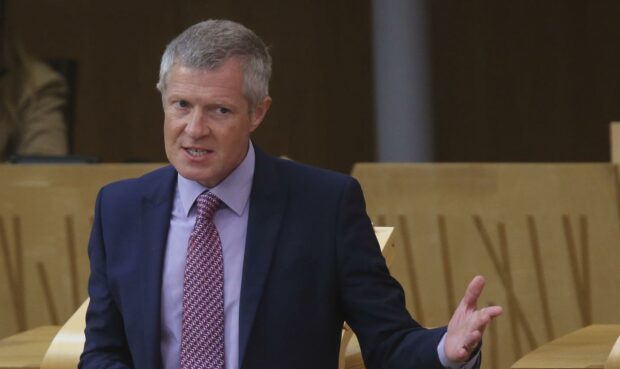The head of the UK Statistics Agency says Nicola Sturgeon was “correct” to say coronavirus infections in England were 20% higher than they were in Scotland.
The first minister had drawn attention to figures showing 5.47% of people in England are infected compared to 4.49% in Scotland.
The figures are 0.98 percentage points apart, which and can also be expressed as an increase of 21.8%.
Last week Lib Dem MSP Willie Rennie reported the first minister to the UK Statistics Agency saying he was concerned the coronavirus statistics “may have been seriously twisted”.
However, Sir David responded to Mr Rennie to say Ms Sturgeon was correct when she quoted a 20% difference.
First minister ‘correct’ in statement
In his letter to Mr Rennie, Sir David said: “The coronavirus infection survey estimated that in the week ending 15 January 2022, 5.47% of people in England and 4.49% of people in Scotland had Covid-19.
“The first minister was comparing these two proportions and correctly stated that the figure for England was more than 20% higher than the figure for Scotland.
“It would also be correct to say that the prevalence of Covid-19 was around one percentage point higher in England than in Scotland.
“Quantitative comparisons between the two estimates should take account of the precision with which they are available, but the data does suggest that the rate of infection is lower in Scotland than in England.
“The distinction between percentages (parts per hundred) and percentage points (the simple difference between two percentages) can be made easier to understand by quoting the two numbers being compared.
“For clarity, when publishing results from the coronavirus infection survey the Office for National Statistics gives the absolute number of people with Covid-19, the percentage of the population with Covid-19, and the number of people with Covid-19 as a ratio to the whole population (for example, one in 20 people).”
‘Hope all will accept the conclusion’
Ms Sturgeon raised the issue during her weekly coronavirus statement in Holyrood, and says she now hopes everyone accepts the findings of the UK Statistics Agency.
She said: “To me what matters is that Scotland is doing better now than we were doing before Christmas, and better than we might have had we not taken action to stem transmission.
“That is what is important.
“How we are faring relative to England, or anywhere else, is not the key comparison.
“But given others have sought to draw that comparison to undermine confidence in the Scottish Government’s decision, I hope all will accept the conclusion that the data cited was indeed accurate.”
